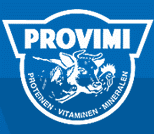Provimi symposium well attended

More than 200 people attended The Provimi Symposium “Optimize Profit through Research & Nutrition” held during the Victam in Utrecht, the Netherlands.
by highlighting some of the issues that the feed industry is currently facing.
He addressed the importance of local research. That is, so he said because
different farmers around the world need different research.
Provimi
currently has 13 research stations worldwide, and with this amount the company
tries to cover the need for this local research. Troost also mentioned that
companies are now working closer on new research than what they used to. This is
particularly seen in new research in finding alternatives to antimicrobial
growth promoters and finding new solutions to cut down methane emission from
agriculture. Troost ended his introduction by saying that the real challenge at
the moment lies in exploring new quality replacements for costly ingredients
(such as fish meal). “Finding new replacements and tools are constantly required
by the sector, and we as an industry have to live up to these demands”, Troost
concluded.
FEFAC opinion
Alexander Döring, secretary General of the
European Feed Manufacturers’ Federation (FEFAC)
kicked off the symposium
by his speech on the current status of the European feed industry. Döring
addressed the key topical dossiers for FEFAC at the moment. These are: feed
labelling, sustainable feed production, codes of good practice, contaminants, GMO,
animal proteins and other issues (including AGP alternatives, future status
of coccidiostats, by products and re-evaluation of additives). Döring
mentioned that FEFAC is currently working to review the animal byproducts
legislation, meaning that options are reviewed to reintroduce byproducts (such as blood
products and meat and bone meal) in certain animal diets. Regarding the future
status of coccidiostats FEFAC has a clear view. They should be registered as
medicines and not as feed additives (which is done at the moment). However,
Döring questions whether animal health companies are willing to pay for the
registration dossiers needed for this.
Fingerprinting
technique
Wim
van Haeringen from the Dr.
van Haeringen Laboratory in the
Netherlands updated the audience on the work they are currently conducting. At
the lab, they use the Microbial Community Profiling and Characterization (MCPC)
technique. With this technique they try to find and characterize new bacteria
species, which are found in the digestive tract. By typing micro-organisms
(MO’s), finding correlations between MO’s and infections and between MO’s and
animal diets the aim is to improve the quality and formulation of the feed for
better performance and health, van Haeringen said.
NIR
infrared
Paul Gerardy from
Research and Technology Centre gave a presentation about the benefits of using
near infrared (NIR) in feed analysis. According to Gerardy, NIR has very
low costs compared to wet chemistry, can measure several nutrients at the same
time, does not need expert skills, has results within minutes, requires no hazardous
chemicals and produces no pollutants. According to calculations done by
Gerardy, a customer with 2 silos for 300m tons of soy can
save around €2.42 per ton soy (€0.48 per ton feed) by using the NIR infrared
technology.
Prof. Verbeke from the Erasmus University, the Netherlands and
Luciano Roppa from Nutron Alimentos in Brazil were also among the
speakers.
Related website:
Provimi
To receive the AllAboutFeed newsletter click
here.











